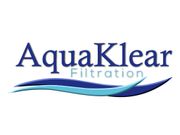
Iron is present in most drinking water systems, but sometimes that balance can tip out of scale and become a problem. Iron-heavy water can spell repair costs, rust stains, and metallic-tasting water. While thorough water filtration can help prevent this problem from getting out of hand, it’s important to recognize the signs of this issue. Have a look at the guide below to learn how to tell when your water’s iron content is too high.
What Are Common Signs of Excessive Iron in Water?
1. Slimy Rust on Plumbing Fixtures
Certain microorganisms use iron as a food source, and they excrete rust in a reddish-brown slime in moist areas like sinks, toilet bowls, and toilet tanks. This can result in water-reliant appliances and plumbing equipment becoming clogged, worn out, or ruined altogether as the slime builds up in pipes.
2. Rust In Water
 The number one indicator of excess iron is a light yellow to reddish-brown color in your water. This occurs when iron oxidizes inside of your pipes, releasing rust particles into the water. This can even be discerned by looking at your teeth: brushing with rust-laden water can lead to rapid and unsightly yellowing.
The number one indicator of excess iron is a light yellow to reddish-brown color in your water. This occurs when iron oxidizes inside of your pipes, releasing rust particles into the water. This can even be discerned by looking at your teeth: brushing with rust-laden water can lead to rapid and unsightly yellowing.
3. Metallic Taste
If your drinking water or the food you cook using it has a harsh, metallic taste, you’re likely dealing with iron-rich water. Food and drinks prepared with this water also tend to have red or brown tinges. Additionally, iron will turn a dark black in tea and coffee, and vegetables cooked in iron-laden water will have a dark, unappetizing appearance.
If you recognize these signs in your home’s drinking water and plumbing, call Aquaklear Filtration LLC in McCall and Boise, ID. Their effective filtration systems can remove sources of iron and iron-eating bacteria, allowing the members of your household to enjoy fresh, clean water worry-free. Call (208) 315-1565 to discuss your needs, or browse their services on their website.
About the Business
Have a question? Ask the experts!
Send your question

